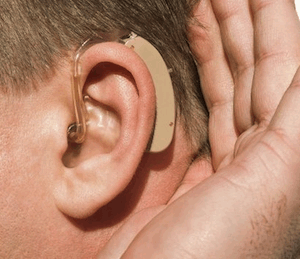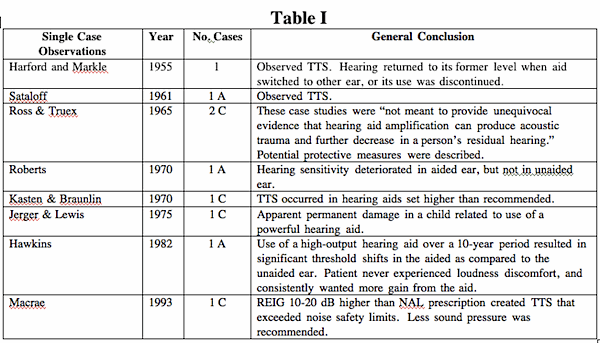Do Hearing Aids Cause Further Hearing Loss?
Last week’s post opened the discussion as to whether hearing aids cause further hearing loss. The issue centers around the concept of threshold shift (or what might more commonly be called changes in hearing sensitivity). More specifically, do powerful hearing aids, or any hearing aids for that matter, potentially lead to further hearing loss? It is well-known that sounds of certain intensities, and present for a length of time, can result in temporary threshold shift (TTS) and permanent threshold shift (PTS) in individuals having normal hearing. However, does amplified sound, for a person having a hearing loss, lead to TTS and then PTS, especially for hearing aid users? If hearing aids result in further hearing loss, this would lead to serious questions about the use of any hearing aid. With this in mind, last week introduced the concepts of TTS and PTS, along with the main types of signals that humans are exposed to: continuous and interrupted sounds, and the general impact they have been shown to have on hearing sensitivity. Those interested in this subject have looked at individual case studies and also at research studies on larger populations. This post reviews some of the case studies that have been published on this subject. Next week’s post will review the larger subject studies.
Studies Specifically Looking for Further Damage Caused by Hearing Aid Use
A limited number of studies/reports are found in the literature that attempted to draw a relationship between hearing aid use and further damage to residual hearing. It appears that most of these reports were published a number of years ago. They can be summarized into case studies or observations (Table I) vs. design studies (Table II in next week’s post). Keep in mind that interpretation of results is confounding because: the hearing impairments ranged from mild to severe, the saturation outputs of the hearing aids were not always identified, the type of loss was not always provided, the length of time under study varied, conditions that might have caused threshold variation were not always identified, otoscopy was not reported, threshold accuracy was often not provided, studies related primarily to children, and much significant information about the hearing aid use was not reported. All of these issues make it difficult to adequately evaluate the reported studies and observations. There was no attempt to ensure that all documentation related to single case observations was exhausted.
A = Adult; C = Children
Harford, E.R. & Markle, D.M. The atypical effect of a hearing aid on one patient with congenital deafness. Laryngoscope, 65, pp. 970-972.
Hawkins, D.B. Overamplification: a well-documented case report. American Speech-Language-Hearing-Association, November, Vol. 47, 1982, pp. 382-384.
Jerger, J.F. and Lewis, N. Binaural hearing aids: are they dangerous for children? Arch. Otolaryngol. Vol. 101, Aug. 1975, pp. 480-483).
Kasten, R.N. and Braunlin, R.J. Traumatic hearing aid usage: a case study, Presented at the 1970 Convention of the American Speech and Hearing Association.
Macrae, J.H. Temporary threshold shift caused by hearing aid use. J. Sp. And Hear. Res. Vol. 36, April, 1993, 365-372.
Roberts, C. Can hearing aids damage hearing? Acta Otolaryngology, 69, 1970, pp. 123-125.
Ross, M. and Truex, E.H. Protecting residual hearing in hearing aid user, Arch. Otolaryngol. December, 1965, Vol. 82, pp. 615-617.
Sataloff, J. Pitfalls in routine hearing testing. Arch. Otolaryngol. 73, 1961, pp. 717-726.
Next Week’s post will report on designed studies intended to look at the issue of whether the use of hearing aids, especially those of high power, result in further hearing loss.








How can they not? Hearing aids, intentionally or otherwise, are amplifying just about everything. And at substantial levels in most cases. Recall patients comments about the clattering of dishes and keys, the crumpling of paper, after receiving new instruments or adjustment. Certainly the prolonged exposure to this type of noise is deafening. But it’s a tradeoff between worsening one’s hearing versus surrendering an important communication method.
OK so the studies reflect yesterday’s news… what about todays technology?
i am a victim of this.
A hearing aid intended to ampfify high frequency caused heating loss at low frequency after only two days of use. With use disconnectinued Pre extisting hearing levels has not returned after two weeks!